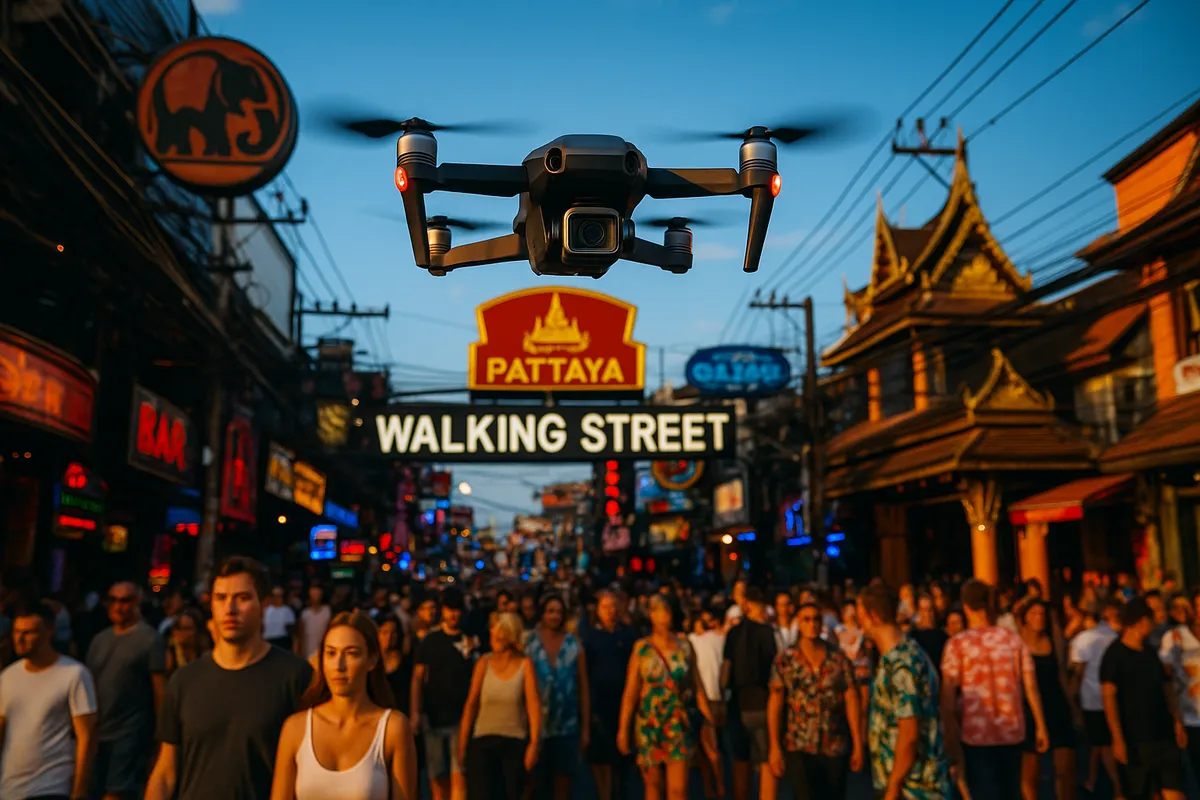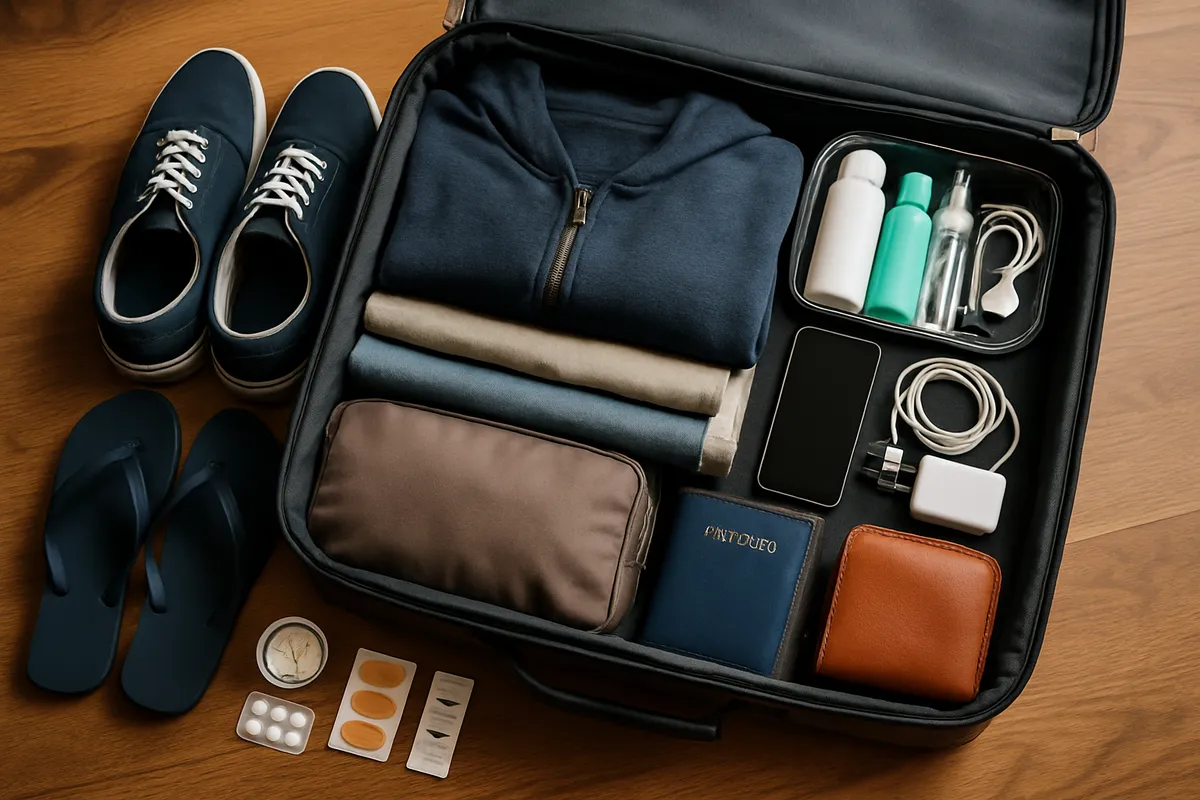Thailand uses AI Drones to hunt for tourists with expired visas on the streets
- Thursday, Jun 12, 2025, 19:45 (GMT+7)
Thailand uses AI Drones to hunt for tourists with expired visas on the streets
Thailand is entering a new phase in its approach to tourism management and internal border control by deploying unmanned aerial vehicles equipped with artificial intelligence to detect and address cases of visa overstays among foreign visitors. The Pattaya city administration has confirmed its plan to use drones with facial recognition capabilities to monitor crowded public spaces, particularly major tourist zones, pedestrian streets, international events, and nightlife areas. These drones will be connected directly to immigration and tourist police databases, enabling real-time cross-referencing of individuals with overstayed visas or flagged for investigation. This marks the first time such a surveillance model has been publicly adopted at scale in a Southeast Asian tourism hub, reflecting a fundamental shift in how immigration and tourist behavior are governed in an increasingly volatile global context.
Pattaya has long faced complex challenges involving foreign nationals who reside illegally on expired visas or who engage in unauthorized work, small-scale unregistered business activities, or even transnational crime. The introduction of drone-supported surveillance is seen as a strategic response to these pressures, both from within the tourism sector and from concerns about public safety. The city's deteriorating reputation in terms of perceived safety, coupled with regional competition for international travelers, has compelled Thai authorities to seek new ways to balance the convenience of tourists with the need for social order.
The deployed drones are equipped with medium-range flight capabilities, high-resolution imaging, and AI-powered visual recognition software. Data captured by these devices will be compared in real time with immigration records to identify individuals who have exceeded their legal stay, lack valid documentation, or are subject to watchlists. Once an anomaly is detected, the system issues an alert to a centralized command, enabling officers or authorized personnel in the field to intervene.
From a technical perspective, the system offers distinct advantages including wide-area surveillance and rapid, contactless detection. However, it also raises important questions about accuracy, data privacy, and accountability in the event of misidentification. There is currently limited public information about who controls access to the data, how long it is stored, or what encryption and protection protocols are in place to prevent misuse.
The use of digital tools in immigration control is not new in Thailand. In recent years, the country has implemented e-Visa platforms, biometric entry gates at major airports, and more recently, a digital tourist identification system. However, extending surveillance beyond entry points into community-level areas suggests a shift from passive monitoring to active, real-world enforcement of immigration policy.
Unofficial data from immigration monitoring services indicate that tens of thousands of foreign nationals overstay their visas in Thailand each year. Many are believed to enter on short-term tourist visas but remain to work, run informal businesses, or engage in unregulated education-related roles. Current laws impose fines of 500 baht per day, capped at 20,000 baht, with longer violations—such as overstaying by more than 90 days—leading to deportation and multiyear bans from reentry. However, enforcement has been limited due to insufficient staffing and irregular checks, especially in cities with high concentrations of foreigners.
In this context, drones are expected to fill a significant gap in surveillance and enforcement. Yet observers from the international travel and human rights communities have expressed concerns about the opacity of operations and the potential for abuse. Civil liberties analysts have warned of privacy risks, especially if the surveillance system lacks independent oversight or legal frameworks regulating data access and retention. On online forums and in travel advisory groups, some foreign visitors have voiced discomfort with the idea of being monitored in public without prior consent or the ability to challenge misidentification.
Younger travelers, particularly those aged 18 to 35, may be especially sensitive to such developments. This demographic often prefers unstructured, immersive experiences that involve long stays and deeper engagement with local communities. Increased surveillance could erode their sense of autonomy and discourage extended visits. If the perception of being constantly watched grows, many may choose alternative destinations in the region that promote a more relaxed and privacy-conscious environment such as Vietnam, Cambodia, or Indonesia.
From a policy standpoint, drone deployment in this case appears to be a tactical response to localized security challenges rather than a long-term structural solution. For the system to be effective without drawing backlash, it must be embedded within a broader legal and institutional framework that includes clear limits on its use, transparent processes for accountability, and public communication about its scope and intent.
To ensure legal integrity and social legitimacy, Thai authorities must establish concrete guidelines for the civilian use of aerial surveillance tools. These should cover operating hours, designated areas, notification requirements, redress mechanisms for wrongful identification, and transparent monthly reporting on the effectiveness of operations. This includes data on the number of cases identified, the accuracy of AI recognition, and the actual enforcement outcomes that follow.
Integrating technology with tourism governance is not inherently problematic. Many advanced economies have already adopted similar measures in airports and public venues. However, such systems function properly only when they are subject to institutional checks, technical audits, and public scrutiny. In the absence of independent monitoring, even the most advanced tools can become liabilities rather than assets in a country’s tourism strategy.
For international travelers planning to visit Thailand, it is crucial to remain informed about evolving visa policies and ensure full compliance with all entry and residency regulations. While drone surveillance is currently limited to specific zones such as Pattaya, the model may be expanded to other cities like Phuket, Chiang Mai, or Bangkok if initial implementation proves successful. Tourists are advised to maintain accurate documentation, be proactive in resolving any visa-related issues, and avoid activities that could be construed as misuse of tourist status.
If implemented transparently and lawfully, drone technology can become a valuable tool for improving immigration enforcement and enhancing public safety in tourist-heavy areas. Nevertheless, success will ultimately depend on more than just machines. Sustainable progress requires coordinated legal reform, inter-agency collaboration, and above all, trust. Tourists are more likely to return to destinations where security and freedom are balanced by fairness and respect. Trust is built not through surveillance alone but through consistency, accountability, and clear communication.

 CHECKIN.VN
CHECKIN.VN








Share on